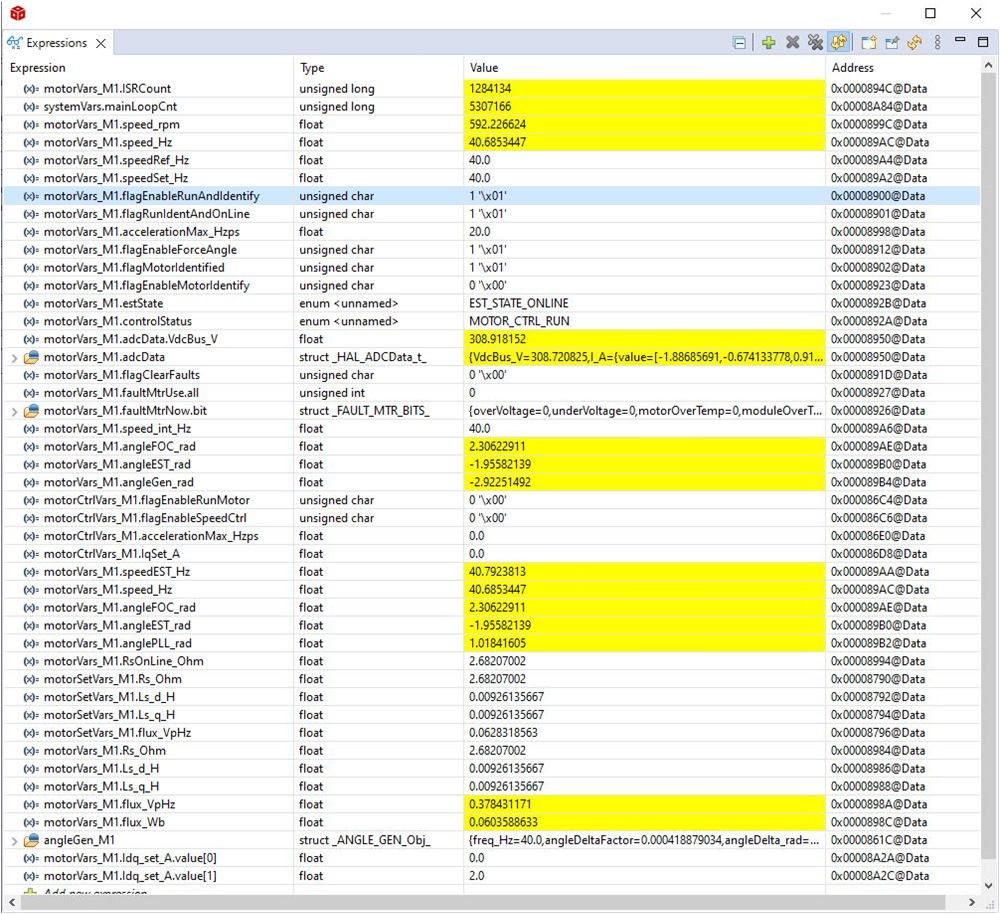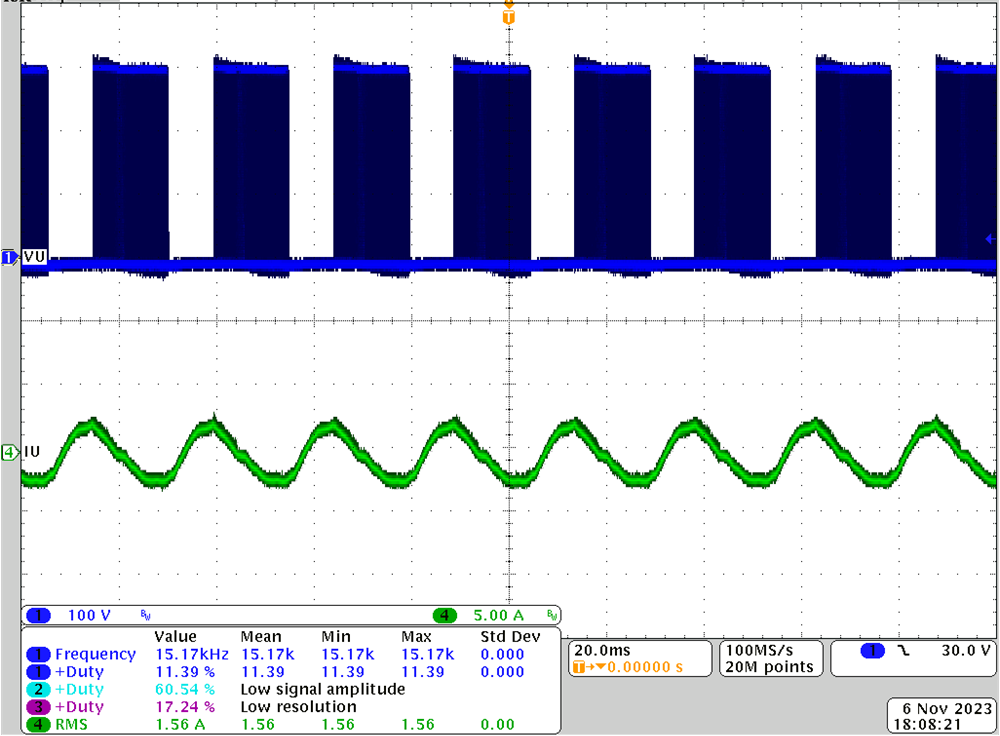SPRUJF4 October 2024
- 1
- Description
- Features
- Applications
- 5
- 1Evaluation Module Overview
- 2Hardware
- 3Motor Control Software
-
4Test Procedure and Results
- 4.1 Build Level 1: CPU and Board Setup
- 4.2 Build Level 2: Open-Loop Check With ADC Feedback
- 4.3 Build Level 3: Closed Current Loop Check
- 4.4 Build Level 4: Full Motor Drive Control
- 4.5 Test Procedure
- 4.6 Performance Data and Results
- 5Hardware Design Files
- 6Additional Information
- 7References
4.5.4.3 Build Level 3 Test Procedure
- Ensure initial steps listed in Section 4.5.4 have been completed.
- The motor needs to run with a closed-loop control using the angle from the angle generator at a setting speed in the variable motorVars_M1.speedRef_Hz. Check the value of motorVarsM1.speed_Hz in Expressions window, the value needs to be very close to the target motorVars_M1.speedRef_Hz.
- The motor current Iq can be adjusted with motorVars_M1.Idq_Set_A.value[1].
- Connect oscilloscope probes to IPM output to watch the motor phase voltage and current. Change the Idq_set_A[0].value[1] in the Expressions window, and observe that the motor phase current increases accordingly.
 Figure 4-12 Build Level 3: Expressions
Window at Run Time
Figure 4-12 Build Level 3: Expressions
Window at Run Time Figure 4-13 Build Level 3: Motor Current
Under 2-A IQ Setting
Figure 4-13 Build Level 3: Motor Current
Under 2-A IQ Setting